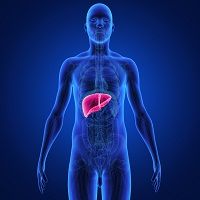Article
For Best Outcomes, Hepatorenal Syndrome Needs Early Recognition and Early Transplant
Author(s):
Hepatorenal syndrome, a potentially deadly complication of ascites in liver disease that represents a devastating metabolic cascade of organ failure, should be recognized early and managed vigorously.

Hepatorenal syndrome (HRS), a potentially deadly complication of ascites in liver disease that represents a devastating metabolic cascade of organ failure, should be recognized early and managed vigorously, says Florence Wong, MD, Professor of Medicine at the University of Toronto. Her overview of HRS was heard during a general session at The Liver Meeting in Boston, MA on November 9, 2014.
Wong began with a thorough review of the pathophysiology of the syndrome, which occurs in individuals with advanced liver disease who develop ascites and portal hypertension. As liver cirrhosis begins to obstruct portal hepatic flow and places shear stress on portal vessels, the production of vasodilators begins. Simultaneously, portal hypertension has action in the gut that can force translocation of gut bacteria and release of endotoxins, with resultant production of cytokines within the vasculature. This portion of the cascade also contributes to vasodilation. Further, increased mesenteric angiogenesis can also cause relative hyporesponsiveness to vasoconstriction.
As this cascade builds, pathologic systemic arterial vasodilation occurs, resulting in a decrease in effective arterial blood volume (EABV). Reduced EABV triggers activation of the renin-angiotensin-aldosterone system (RAAS) and other renal regulators. Inappropriate renal sensitivity to vasoconstrictors can then precipitate inappropriate fluid and sodium retention and renal failure. The final effect of the devastating cascade is encroachment on cardiac reserve and cirrhotic cardiomyopathy.
This cascade proceeds rapidly in those who have the more fulminant HRS type 1, which often has an acute event triggering the syndrome. Infection is the most common precipitating factor, since bacterial products and cytokines can also cause rapid deterioration of hemodynamics. These patients will see a rapid doubling of serum creatinine (to >2.5 mg/dL), or a 50% reduction from initial creatinine clearance (to <20 ml/min). They are acutely ill, with marked jaundice and coagulopathy. Without treatment, most patients will die within two months, with essentially none surviving beyond four months.
For HRS type 2, renal function deteriorates more slowly, over weeks to sometimes months; this syndrome is more likely to be seen in patients with cirrhosis and refractory ascites. Patients with HRS type 2 have milder jaundice and less severe coagulopathy, but more than half of patients will still die within a year without treatment.
Medical treatment of HRS aims to rebalance vascular capacitance and intravascular volume. Vasopressin analogs can contribute to splanchnic vasoconstriction and bring about a redistribution of blood volume, improved vascular tone, and a resulting increase in systolic blood pressure. In turn, renal perfusion pressure increases, helping halt the inappropriate RAAS activation. One vasopressin analog, terlipressin, is available in Europe but not North America. Dr. Wong shared data showing that terlipressin, when used with albumin for volume expansion, performed better than control to produce improvement in HRS serum markers, but has not been shown to improve overall survival. Norepinephrine, a widely available agent, may also be used.
Though hepatologists may also attempt interventions to manage portal hepatic pressure such as placement of a transjugular intrahepatic portosystemic shunt (TIPS), liver transplant remains the definitive treatment for HRS for eligible candidates.
Wong presented compelling evidence that rather than allowing patients to remain on renal dialysis for 60 or 90 days, as is often current practice, early transplantation should be considered when possible. Transplantation, which can reverse HRS by eliminating liver dysfunction and correcting portal hypertension, has best results when patients had fewer than 14 days of pre-transplant dialysis. Once HRS has been reversed by transplant, patients will normalize serum creatinine after a brief post-transplant period. Clinicians may thus anticipate a brief period of post-transplant dialysis, but anticipate HRS reversal, especially with early transplant.




